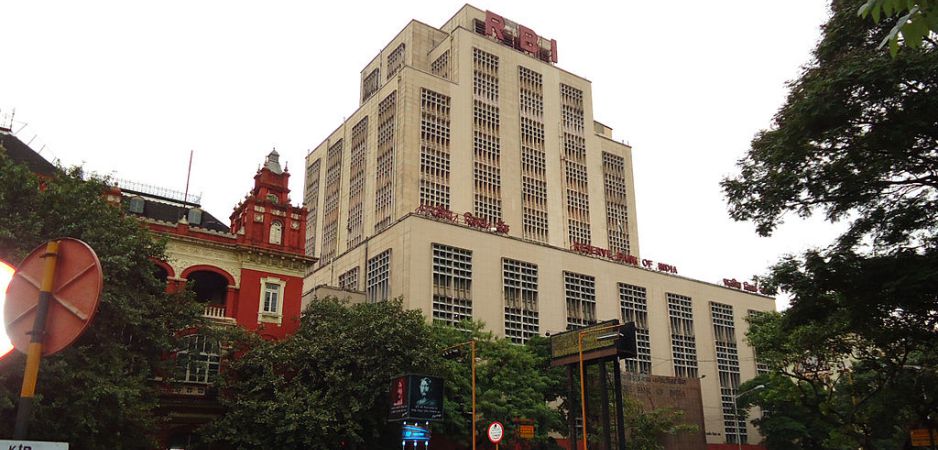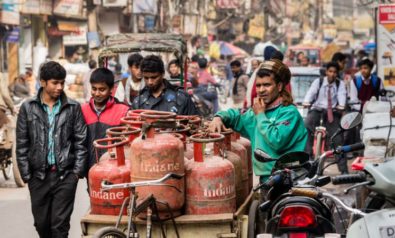In this edition of The Interview, Fair Observer talks to Manu Sharma, an editor at CVoter International.
The calendar year 2015 has been an eventful time for the Reserve Bank of India (RBI), as the Indian central bank has cut interest rates by 75 basis points (bps) or 0.75%. The first two repo rate cuts took place outside the scheduled RBI meetings on January 15 and March 4, due to a number of reasons ranging from falling oil prices (feeding into lower inflation) to weak capacity utilization. Interest rate cuts were also made possible by the prospect of a more disciplined governing regime, as the fiscal deficit is expected to hit 3% of gross domestic product (GDP) by fiscal year (FY) 2018.
On June 2, 2015, the RBI reduced the repo rate by 25bps to 7.25% while keeping the cash reserve ratio (CRR) and the statutory liquidity ratio (SLR) unchanged at 4% and 21.5%, respectively. Such measures may have been taken to spur the Indian economy that had recently suffered from poor corporate earnings and low credit growth.
Further compounding the weak statistics is the tepid monetary transmission mechanism, as banks have not reduced their base rates by as much as Governor of the RBI Raghuram Rajan had hoped. Banks have cited large amounts of non-performing assets (NPA) as a crucial impediment for low credit growth.
The consumer price inflation (CPI) rate has been tamed as the measure rose by 4.87% in April from a year ago, which is still below the 6% inflation rate target set by the Urjit Patel report. Yet weak monsoons could lead to higher inflation through food costs that could limit further interest rate cuts in the future. This sentiment was affirmed by the central bank as it recently forecast inflation rising to 6% by January 2016.
With many pressures stemming from domestic and foreign markets, the RBI also faces a problem with the formation of the monetary policy committee (MPC). While Rajan wants to maintain autonomy of the RBI’s monetary policy regime, Finance Minister Arun Jaitley vies for more government representation.
In this edition of The Interview, Fair Observer talks to Manu Sharma, an editor at CVoter International, about the RBI and its monetary policy stance.
Daniel Currie: On June 2, the RBI lowered the repo rate by 25bps to 7.25%. What were your expectations for the RBI?
Manu Sharma: I wanted the RBI to reduce rates by 50bps rather than 25bps. At the moment, growth has not panned out as much as it was expected from the Indian economy as there are a number of structural constraints that may deter firms from investing in capital expenditure. The large amounts of NPAs on the banks’ balance sheet will also result in a low pass through of repo rates to bank lending rates.
Currie: You mentioned that you expected a larger interest rate cut. But with the unpredictability of monsoons, is the RBI being cautious on inflationary pressures in the near future?
Sharma: The picture is convoluted at the moment for a couple of reasons. Firstly, we are still unsure about the level of rainfall being above or below expectations, as the best time to understand the level of rainfall is to wait for the monsoon.
However, if there is a deficient monsoon, then the government can utilize its buffer stocks to ease the pressure on inflation. If the government cannot manage the buffer-stock scheme effectively, then there may be higher inflation in the future.
Currie: What are your expectations for the repo rate in the upcoming months? Do you think Rajan will cut the CRR or the SLR?
Sharma: The movement of repo rates in the future will depend on the growth rate of the Indian economy and inflation rates. If sustained low oil prices lead to lower inflation, then the economic environment could be conducive for the interest rate cut.
There should not be any tinkering with the CRR and SLR, because those measures could affect larger dynamics than the RBI would prefer. Currently, Indian banks are saddled with a lot of NPAs, and it would be prudent to not change the liquidity norms at this time.
The best measure would be to reduce the “cost of funds” through the use of the repo rate.
Currie: With the current trajectory of the economy, what repo rate hike/cut do you expect by the end of 2015?
Sharma: By keeping a close watch on the unwinding of bad debt and stressed assets along with the performance of the stock market, a rate cut of 25-50bps is expected; a cut of 50bps would be optimal.
Currie: What sectors of the economy are likely to benefit from the interest rate cut in the short- to medium-term?
Sharma: Interest rate cuts benefit small to medium sized enterprises [SMEs], as well as retail consumers. The level and cost of credit helps SMEs with capital investment. Larger firms can source funds from anywhere in the world, which means they are not as affected as SMEs are with changes to the repo rates.
Currie: Why has the monetary transmission mechanism taken a long time to pass through to bank lending rates? What are the specific impediments to monetary policy transmission in India?
Sharma: An understanding of the monetary transmission mechanism requires an analysis of the aftermath from the 2008 financial crisis. The previous US president, George W. Bush, passed the Troubled Asset Relief Program (TARP) to buy distressed assets from banks; however, it did not jumpstart the economy. Financial institutions tried to shore up their balance sheets by either issuing fewer loans or buying treasuries. This is known as financial disintermediation as banks made safer investments to ensure their survival after the financial crisis.
India is facing the same situation at the moment, considering the system used to work on burdensome regulation and crony capitalism. At the present time, banks have a large amount of NPAs on their accounts. Even if there are cuts in the repo rates, banks are not willing to lend because they are worried that their financial situation could worsen over the upcoming months. Indian financial institutions are using the time to bolster their balance sheets by either buying safer assets or cutting their lending.
 The specific impediments to monetary transmission are cyclical and structural factors in the economy. The former results when a rising share of NPAs weakens the bank’s balance sheets, leading to subdued lending growth. There is also a form of “window dressing” as banks will try to not publicly disclose the number of stressed assets on the account books. This tends to be a short- to medium-term phenomenon; however, it is in the interest of the RBI to ensure that this does not become a medium-term problem.
The specific impediments to monetary transmission are cyclical and structural factors in the economy. The former results when a rising share of NPAs weakens the bank’s balance sheets, leading to subdued lending growth. There is also a form of “window dressing” as banks will try to not publicly disclose the number of stressed assets on the account books. This tends to be a short- to medium-term phenomenon; however, it is in the interest of the RBI to ensure that this does not become a medium-term problem.
Structural factors are borne out from the inefficiencies in the economy that range from the amount of financial inclusion to the size of the parallel economy. Before the advancement of the Pradham Mantri Jan Dhan Yojana program, a large number of individuals were not part of the formal banking system. The monetary transmission mechanism will be strengthened with more financial inclusion.
The size of the parallel economy can also disrupt the monetary policy transmission mechanism. Individuals and businesses that are part of the parallel economy may not be as affected by changing interest rates than those who are part of the formal economy. In order to fix this problem, the government has to find a way to curb the size of the parallel economy.
Currie: Why does the RBI concentrate heavily on policy rates affecting bank lending rates when there are other channels that could be as effective, such as the exchange rate channel?
Sharma: The tinkering of exchange rates has political and financial ramifications. In addition, people remember the balance of payments crisis in 1991 that resulted in reserves being used to pay for the high import bills. With memories still fresh from the time, the RBI wants to stay away from too much financial intervention on the exchange rate through monetary policy. Finally, the exchange rate channel also has limited effectiveness.
Currie: What are the regulatory tools that the RBI and government can use to strengthen the monetary policy transmission mechanism?
Sharma: The government must pursue financial inclusion while reducing the size of the parallel economy. The RBI should do whatever it can to further the abovementioned goals for the future.
Currie: Has the government been effective with these reforms over the past year?
Sharma: The government has worked fast with the black money bill, which will allow authorities to crack down sharply against the people who park their money in safe haven countries; thereby reducing the size of the parallel economy.
There were initial differences between the RBI and the government concerning the implementation of the Pradham Mantri Jan Dhan Yojana program. Nonetheless, it has largely been a success, even though there are some authenticity problems surrounding the newly opened bank accounts. The RBI and the government have worked as a team and criticized each other when necessary; this is beneficial for the country going forward.
Currie: Rajan made two unscheduled 25bps interest rate cuts in January and March 2015. How do unscheduled rate cuts impact forward guidance by the central bank?
Sharma: Forward guidance, as a tool to affect the level of expectations around the level of interest rates, is weak in India relative to how it is used by the US Federal Reserve. While people may have called the previous rate cuts as “unscheduled,” market participants had already factored in the information. The government had long been asking for interest rate cuts, and Rajan went on record stating that interest rate cuts were likely at the time.
The exact timing may not have been known, but people were expecting the interest rate cuts. This was not a good example of unscheduled rate cuts, and it did not adversely affect forward guidance by the RBI.
Currie: What variables are required for Rajan to consider rate cuts outside the scheduled meetings?
Sharma: Any “unscheduled” rate cuts are contingent on growth and inflation measures. If there is increasing volatility with the inflation rate, the RBI will have to use the repo rate to counter.
The larger macroeconomic structure will also be taken into consideration, as Rajan will want to see the Indian economy attaining stronger growth into the future. There is also a lot of pressure on the financial system to help on this end by facilitating increased amounts of cheaper credit to the economy.
Currie: The “taper tantrum” in 2013 caused a lot of turbulence in financial markets as foreign capital moved away from emerging markets. What does India need to do to be in a better position to withstand any mass outflow of foreign capital?
Sharma: With the Federal Reserve planning to unwind the program a few years ago, the banks reversed their positions in emerging markets.
A country can only partially protect itself from a capital flight episode. If it is a cyclical movement of money—impacting the Indian economy for a month or two—then it should not be a great problem. However, if the capital flight is large enough to cause systemic disruption in India’s business climate, the effects could be detrimental.
The government could institute circuit breakers that would curb the amount of exposure that foreign institutional investors [FII] have in the Indian capital markets; this could be levied on FIIs because such funds can be moved quickly from one country to another causing numerous problems.
Foreign direct investment [FDI] should be given full autonomy because they involve a longer-term approach on the Indian economy. The importance of ensuring the FIIs do not grow to a large proportion of the capital markets can be explained by the simple analogy of a diversified portfolio. India would not want all its investment to be in the form of FIIs, rather it should diversify its investment sources.
Currie: Rajan recently gave a speech at The Economics Club in New York on the problems of uncoordinated monetary policy from various central banks. Should central banks care for the effects of their monetary policy on the global environment as long as they achieve their domestic and legal duties?
Sharma: Rajan studied in the United States and worked as the chief economist of the IMF [International Monetary Fund]. His experiences have given him an international approach to central banking, along with an appreciation of the positive and negative externalities stemming from monetary policy decisions on the global environment.
However, central banks in democratic economies face constant pressure on their level of autonomy from their respective governments. It is a challenge to achieve the current central bank mandates in many economies, which makes it unfeasible to achieve coordinated monetary policy at the time being.
Currie: You mentioned “at the time being” in your last response considering coordinated monetary policy. Do you see a framework created in the future to accompany a more global organized approach to monetary policy?
Sharma: At the moment, the US and European central banks usually move in tandem even though the former may raise interest rates in the near future. The Organization for Economic Co-operation and Development’s [OECD] membership of countries pursue some form of policy exchange; this takes place to a lesser extent with the Brazil, Russia, India, China and South Africa [BRICS] and frontier economies.
Once the BRICS economies contribute a greater share to the global GDP, then the OECD countries will pay greater heed to their monetary policy stances.
Currie: Oil prices have fallen, the US economy has not achieved “escape velocity,” while the Modi effect has buoyed investors on India. Has Rajan battled inflation and commanded the RBI well, or are his successes largely based on luck?
Sharma: There are many experts who say inflation is a supply side phenomenon. The limited capacity to meet the growing demand for resources will cause the Indian economy to overheat. Over time, lower oil prices have contributed to subdued inflation rates, but the productive capacity is still suboptimal, thus leading to higher inflation pressures.
Rajan has performed well with policy and leadership of the RBI; however, the successes from taming inflation can be attributed to luck.
Currie: A Harvard University economist, Gita Gopinath, disagreed with the government’s stance to “do away with the distinction” between foreign portfolio investment [FPI] and FDI because it would increase volatility in capital flows. Do you agree with Gopinath? Why or why not?
Sharma: I agree with Dr. Gopinath’s view because FDI flows bring the promise of entrepreneurial energy and managerial assets to help the Indian economy. FPIs can increase volatility in the markets as funds can be moved from one location to another with a few clicks on a computer, making the distinction between FDI and FPIs an important one.
Currie: The recent Urjit Patel report has made inflation targeting the mandate for the RBI. Why has India not considered the dual mandate of price stability and full employment that the US Federal Reserve has upheld?
Sharma: It would be difficult for the RBI to do justice in a dual mandate scheme because it is hard to meet the desired level of employment. It will be an onerous task to get unemployment to fall below a certain level—especially with a large youth population—and this is compounded with a large parallel economy. Targeting inflation has the necessary effect of increasing the employment of resources in the economy.
To increase employment, the RBI can only tinker with the formal economy, even though a large parallel economy exists. The government can reduce the influence of the parallel economy by lowering the regulatory burdens for SMEs. Reducing the paperwork required to start a business will allow entrepreneurs to consider registering their businesses with the government.
Currie: The MPC that needs to make decisions on monetary policy has yet to be formed. Jaitley thinks the board should not have a majority of RBI members, while Rajan disagrees. How would you structure the MPC: Should the government or the RBI have a majority?
Sharma: I side with the central bank on this issue, as it is imperative to preserve the RBI’s autonomy and power. In India, the government continues to fall prey to populist politics, which leads to a lot of emotional decision making and erratic governance. Economists and technocrats at the RBI are insulated from this, and they will make decisions based on what is right rather on what is popular.
The views expressed in this article are the author’s own and do not necessarily reflect Fair Observer’s editorial policy.
Photo Credit: Kolkatan / World Economic Forum
We bring you perspectives from around the world. Help us to inform and educate. Your donation is tax-deductible. Join over 400 people to become a donor or you could choose to be a sponsor.
Support Fair Observer
We rely on your support for our independence, diversity and quality.
For more than 10 years, Fair Observer has been free, fair and independent. No billionaire owns us, no advertisers control us. We are a reader-supported nonprofit. Unlike many other publications, we keep our content free for readers regardless of where they live or whether they can afford to pay. We have no paywalls and no ads.
In the post-truth era of fake news, echo chambers and filter bubbles, we publish a plurality of perspectives from around the world. Anyone can publish with us, but everyone goes through a rigorous editorial process. So, you get fact-checked, well-reasoned content instead of noise.
We publish 2,500+ voices from 90+ countries. We also conduct education and training programs
on subjects ranging from digital media and journalism to writing and critical thinking. This
doesn’t come cheap. Servers, editors, trainers and web developers cost
money.
Please consider supporting us on a regular basis as a recurring donor or a
sustaining member.
Will you support FO’s journalism?
We rely on your support for our independence, diversity and quality.


















Comment